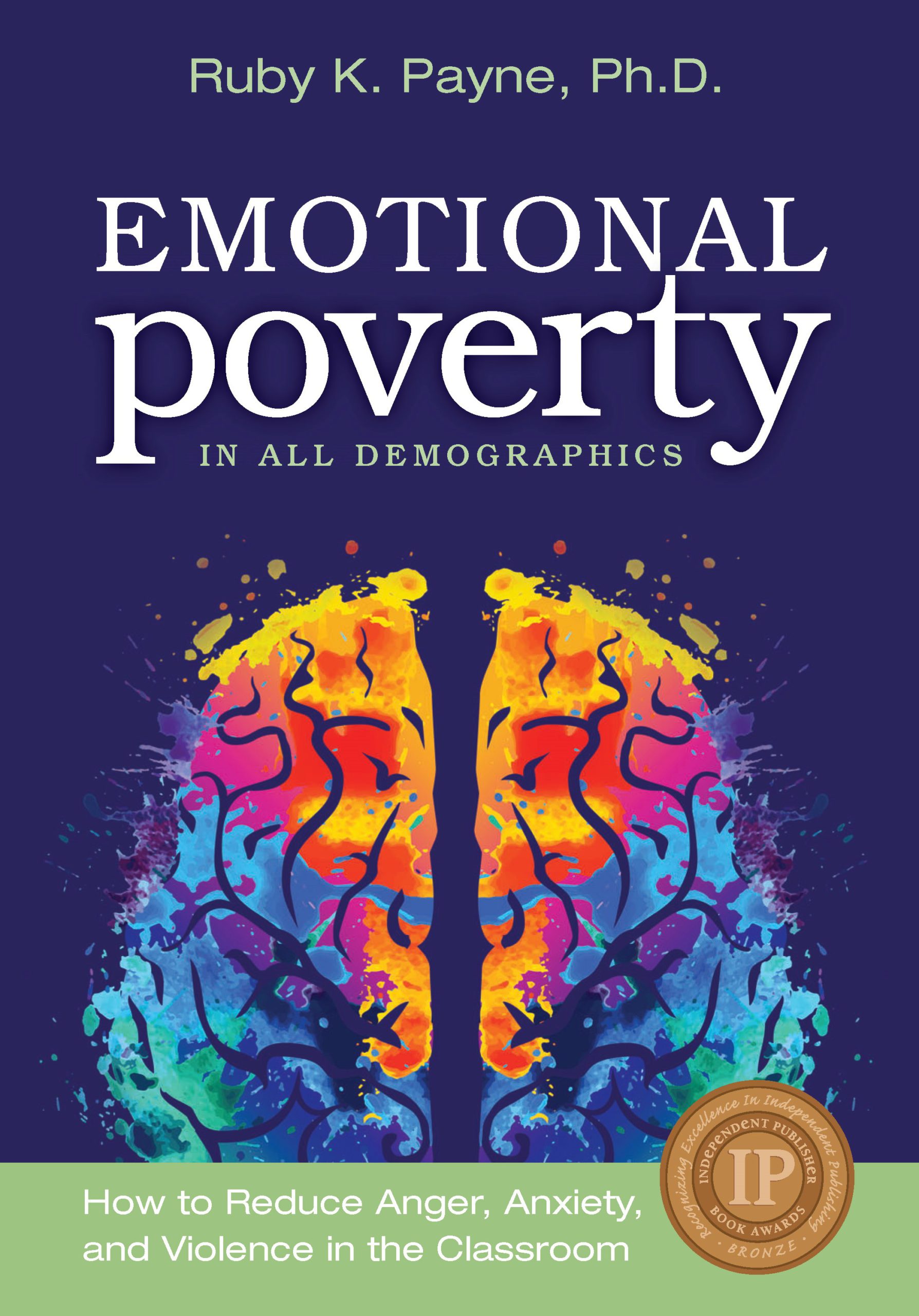 Q&A with Ruby K. Payne, Founder and CEO, aha! Process
Q&A with Ruby K. Payne, Founder and CEO, aha! Process
How does the emotional well-being of students directly correlate to school shootings?
Emotional well-being is based on safety and belonging. Students who have emotional well-being support more often choose better behaviors and control impulsivity, and show compassion for themselves and others. The FBI says there is no one profile for mass shooters. However, 93% of them have shown some sort of concerning behavior, and almost all of them identified some kind of perceived loss in their lives.
Addressing anger, anxiety and violence in the classroom
In her book, Emotional Poverty in All Demographics: How to Reduce Anger, Anxiety, and Violence in the Classroom (aha!, 2018), Ruby K. Payne shares how all students can benefit from calming and healing techniques to reduce emotional poverty.
Payne combines research on the brain and human development and the practical experience of educators and students to provide classroom strategies and best practices. Her book includes:
– A guide to understanding the origins of anger, anxiety and avoidance
– Language to talk about brain regulation, integration and emotional competence
– Tools for educators to address and reduce students’ anger, anxiety and avoidance
– Practices for handling “classroom dance” management between educators and students
– Methods to motivate good behavior
– Information about the emotional processing differences between males and females
How effectively are states addressing the emotional wellness of students?
Right now, some states are just at the level of awareness. Over the past 25 years, particularly since we started putting an emphasis on student achievement, we have abandoned whole child learning—both cognitive and emotional learning. The focus has been on the cognitive part. Consequently, states have a belated understanding that they have to go back and address emotional issues because of the high correlation to learning.
What can schools learn from these actions to provide emotional safety?
I recommend emotional triage. Right now, schools are drowning in data. A teacher with 38 pages of student data recently told me that he was not using any of it. With emotional triage, school leaders look at three groups of students: loners, students who are anxious, and students who are both safe and dangerous. A school team should put together a list of students who are having emotional difficulties, just as we do for students who have academic difficulties. For the most emotionally unstable, an educator should have daily, one-on-one contact with that student for three to four minutes to ascertain their current emotional status.
Why is it important for K-12 leaders to recognize the difference between emotional poverty and financial poverty in their efforts?
School leaders need to realize that financial poverty and emotional poverty are not the same. Financial poverty involves a lack of basic necessities for living, such as food, shelter, medical care, and the language of school and work. Emotional poverty is when the integration and regulation of the brain is underdeveloped, the inner self is weak, and bonding and attachment is unstable. For schools to provide better emotional safety, educators must have the right vocabulary and strategies to address the issues that surface. When these basic emotional structures are not in place, students have difficulty negotiating school and learning. The safety of other students and staff is reduced. Teachers need better tools to calm students and address emotional issues.
Educators praise Emotional Poverty book
 “At last, a book that addresses the emotional resources of individuals and not the politics of school violence. It has the potential to change the trajectory of learners who might be minutes away from a violent act. A must-read.”
“At last, a book that addresses the emotional resources of individuals and not the politics of school violence. It has the potential to change the trajectory of learners who might be minutes away from a violent act. A must-read.”
Rendy Belcher, i3 Project Director
Green River Regional Educational Cooperative
Bowling Green, Kentucky
“Combining research into the brain and human development with the practical experiences of students and staff, Payne shares real tools and strategies that build positive, nurturing relationships. I feel hopeful that students will come to school and know they are safe.”
Jennifer Hedinger
Workforce 360 Senior Program Manager
OhioGuidestone
“Using both research and personal stories, Emotional Poverty serves as an excellent resource for understanding how emotional issues affect schools and classrooms.”
Sharon Ray, First Choice Administrator
Pequea Valley School District
Kinzers, Pennsylvania
“Provides educators with the ‘how’ and ‘why’ of building relationships with students. In today’s climate, we need these tools to give students a safe environment.”
Karen Coffey, Director of Intervention
Goose Creek Consolidated Independent School District
Highlands, Texas
“Emotional issues can prevent learning. Payne offers educators academic and behavioral tools to create a calm learning environment and help students manage emotions.”
Lauren Puente, Behavior Specialist
Region 6 Education Service Center
Huntsville, Texas
For more information, please visit ahaprocess.com







